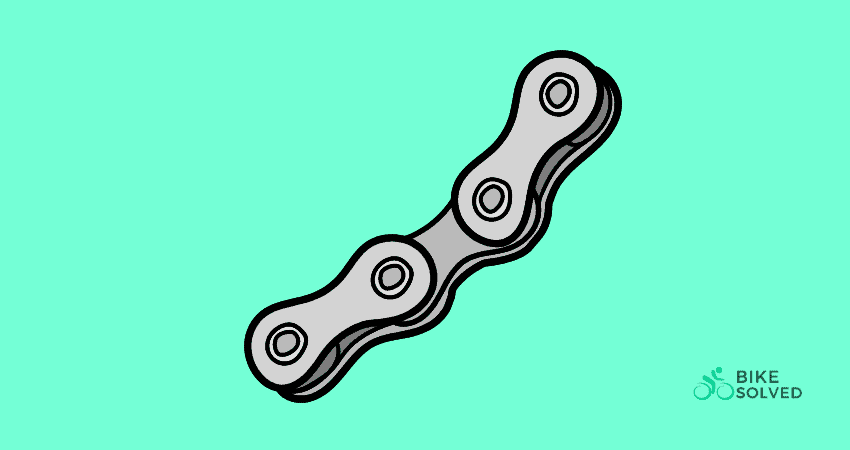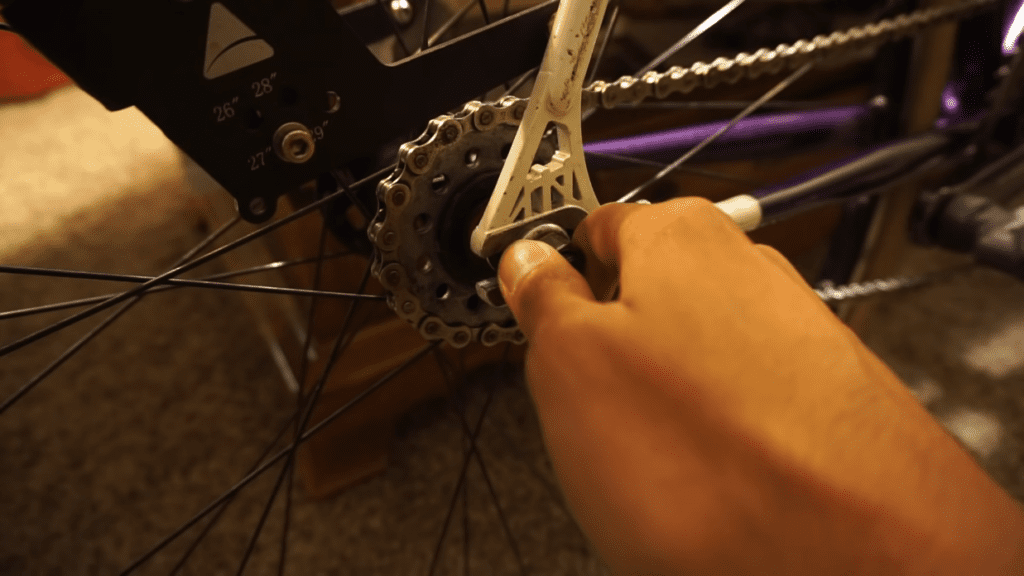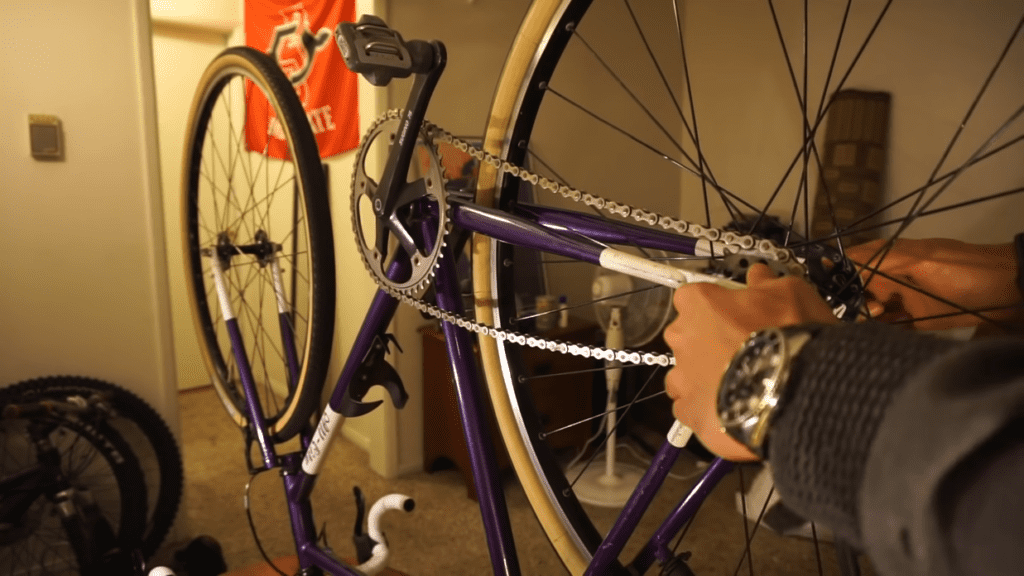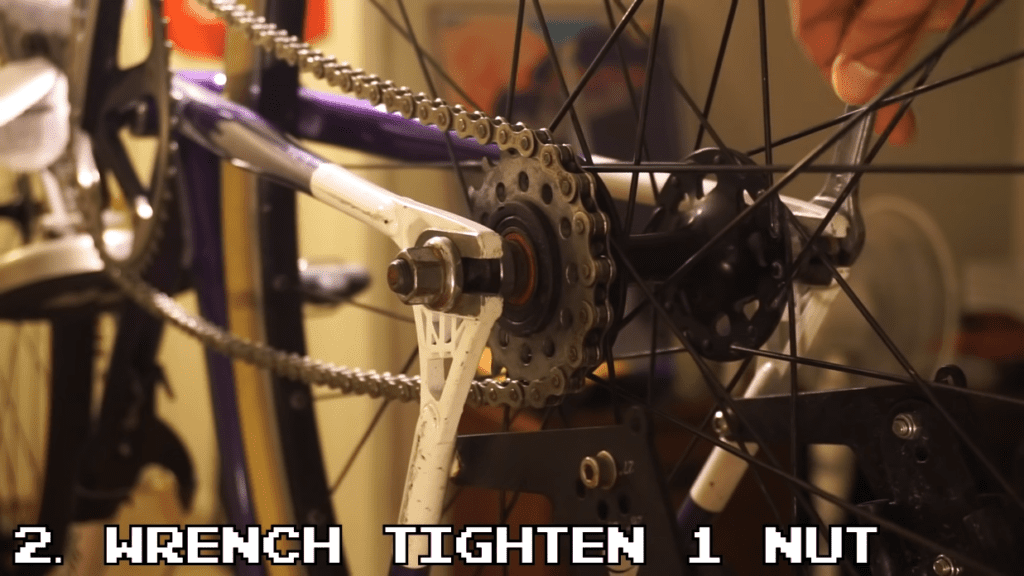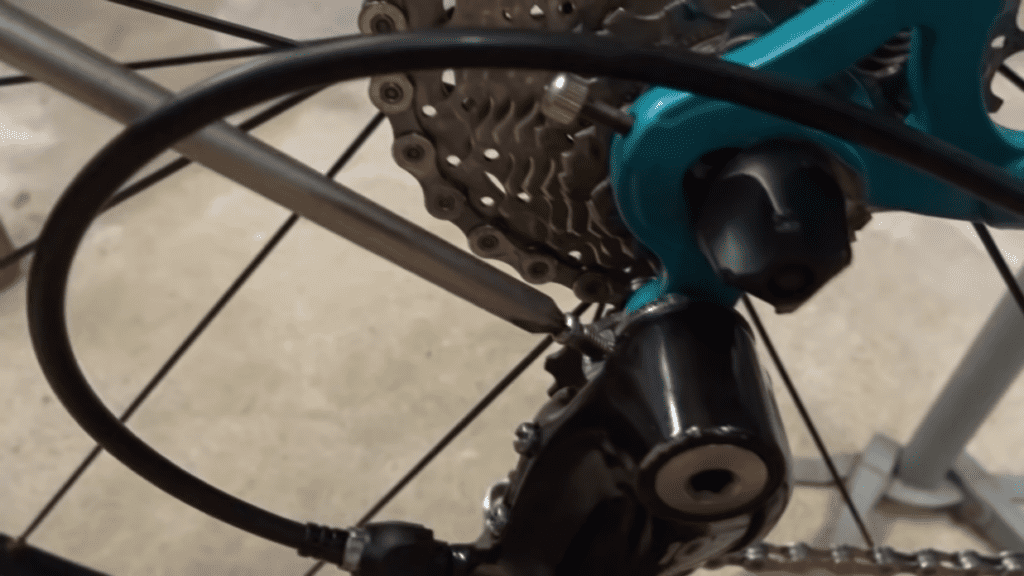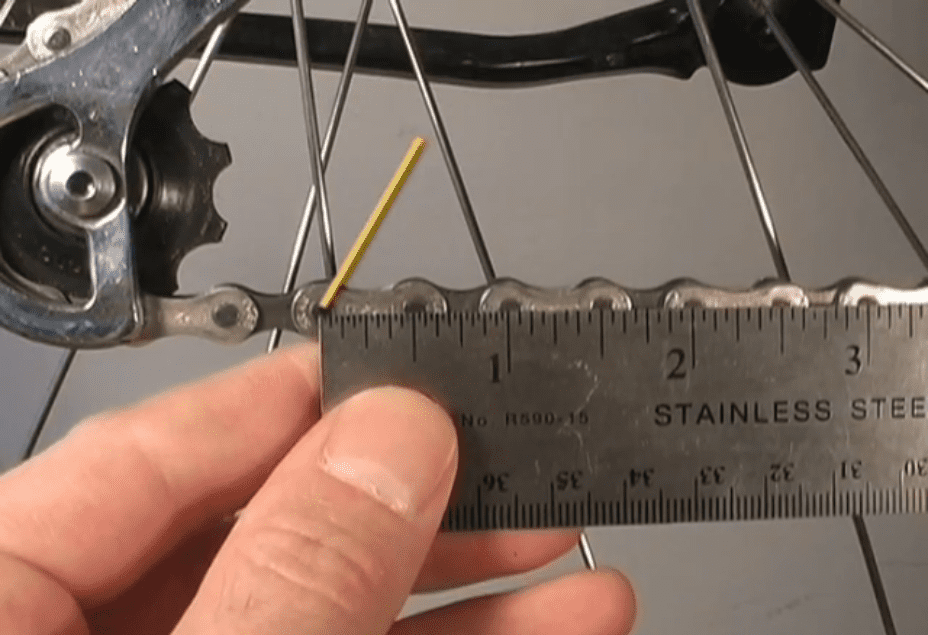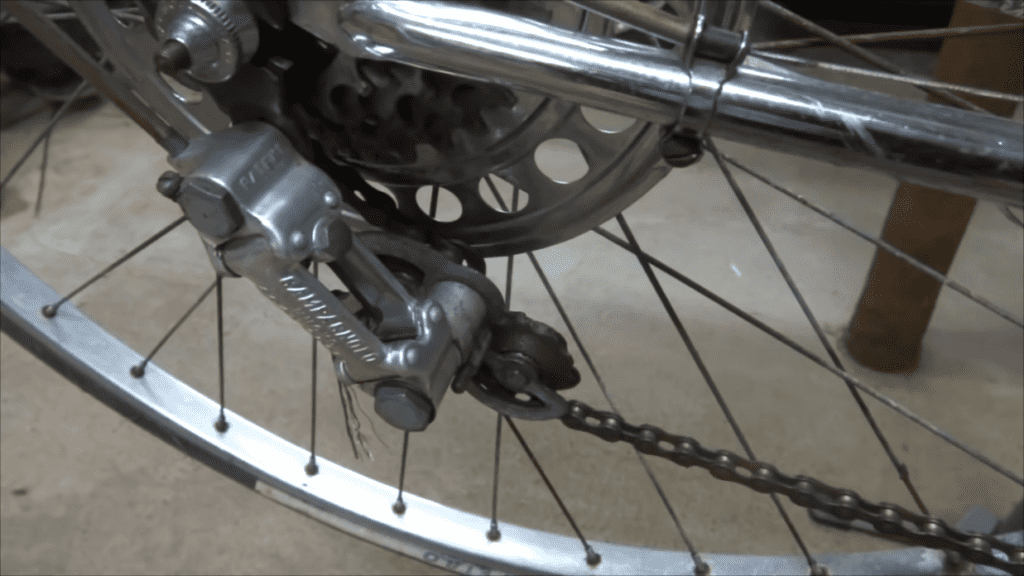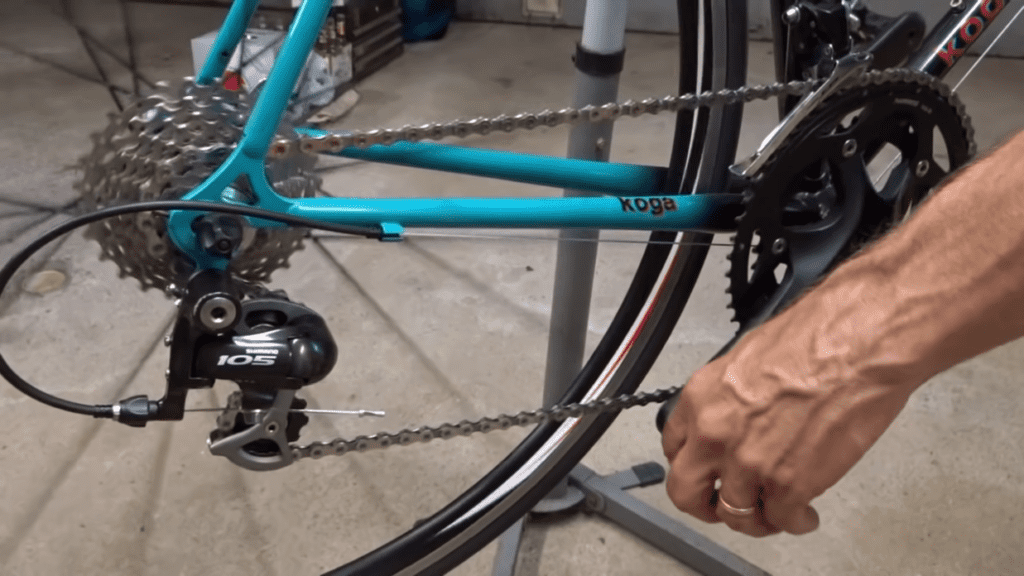Does the chain of your bike keep falling off? Whether you own a single-speed or a multi-gear bike, it is possible for your bike chain to become loose over the course of time. When I bought my first bike, I noticed its chain getting loose as it got older. Eventually, it came off due to normal wear and tear.
At that time, I had no idea how to fix it. In fact, I thought this issue could only be addressed by professional help. However, it didn’t take long for me to realize that it is pretty simple to tighten a bike chain.
With a bit of research and tutorials, I understood the easiest method of fixing a loose chain and realized how important it is to learn this skill. In this guide, I have included detailed steps on how to tighten a bike chain. They are easy to follow and are based on my own experience and thorough research.
Bikesolved.com is readers supported, you may find Amazon affiliated links on this page, that pays us commission for recommending products at no extra cost to you.
Tools required to tighten a loose bike chain
Before you learn how to tighten a bike chain, it is necessary to have specialized tools, which this process will require. You can even invest in a bike repair kit if you do not wish to get these tools separately. Even if the process is simple, it cannot be carried out without the following tools which you should arrange:
- Chain lube
- Leveled surface or a bike stand
- Allen tool
- Socket wrench
- Gloves
- A piece of cloth
How to tighten a bike chain
1. Flip your bike upside-down
The first step would be to place your bike upside down on a flat surface. If your bike has a stand, you may use it. You can also use a wall for support. The purpose of this step is to ensure better access to the components of your bike.
The saddle of your bike should touch the ground and be high enough so that you can lift the rear axle up. On the other hand, the tires and wheels should remain in the air. To avoid unnecessary damage to the saddle, consider using a pile of newspapers or a mat between the saddle and the ground.
You can also unscrew reflectors, bells, or other fittings of handlebars to prevent damage. You should be able to access components like the rear axle and the chain of your bike. Before disassembling, make sure to know what part is placed where. Do not forget to wear hand gloves since you would not want to get your hands dirty with all the oil on your bike chain.
2. Loosen the rear axle
Next up, you are supposed to loosen the bolts of your rear tire. In order to adjust your bicycle chain; is a significant step. Using the socket wrench, rotate the nuts in the anti-clockwise direction.
Do this until the bolts of your rear tire have been loosened. Make sure not to completely remove the nuts. If you do so, the rear axle of your bike will come off, and you will have to reassemble it. You just have to loosen the bolts using a socket wrench.
Some bikes are equipped with a brake attached to the chainstay, which needs to be released before moving the wheel. This can be true if your bike is fitted with a coaster or roller brake. All you have to do is unscrew these bolts and remove the brake.
3. Pull the rear tire
The chain of your bike should start tightening as soon as you pull your rear axle. Make sure to be very gentle while moving it toward the back. Begin by using your hand to get hold of the wheel. You should then hold the bike frame with your other hand.
You can then proceed to pull the rear axle back from the bike frame. Once you feel that the bike chain tension is optimal, you can stop pulling the rear tire and hold it in place. Make sure the wheel of your bike is appropriately aligned and centered, as it will be easier for you to assemble the parts again.
Once you feel your bike chain is tightened, check its movement. The chain should not be able to move more than 1 inch in the upward or downward direction. You will also notice that it has stopped hanging like before.
4. Tighten your rear tire.
Now that your bicycle chain feels tightened, do not forget to place the rear axle back in its place while reassembling. Just hold your wheel and screw back the nuts you loosened earlier to make the rear tire tight. This should be done using a socket wrench which needs to be turned in a clockwise direction this time to tighten the bolts.
The final step is to test if you’ve been successful at tightening your bike chain. Move the tires forward and then backward. Spin them and check if the bike chain and pedals are moving smoothly.
While doing so, ensure that your fingers are not so close to the gear of your bike as they can get trapped, leading to an injury. Your chain must have more tension and should stop hanging. And just like that, you will have tightened the chain of your bike on your own.
If you own a bike with derailleurs, there could be several reasons behind a hanging bike chain. It is evident that the process will be much more complicated, but following the below-mentioned steps will make it easy for you to tighten it.
How do you tighten bike chains with gears?
1. Flip your bike
Just like a single-speed bike, flip your geared bike upside down. You can even secure it with a bike stand. This will make it easy for you to access and work with its components. You can keep a mat or cloth under your saddle since it will be in contact with the ground. The wheels of your bike will remain in the air while you move behind the tire to work efficiently with the rear derailleur.
2. Adjust the B tension screw
To tighten the chain of a bike with gears, you will have to find the rear derailleur screw. You will find a screw against the letter B printed in most bikes with gears. This screw is called the B tension screw, which is responsible for a bit of chain tension in geared bicycles.
In order to adjust this screw, you will have to rotate it anti-clockwise. You can use your screwdriver to do it. This will decrease the bike chain tension in the bike. You can then rotate it clockwise to increase the tension and tighten the bike chain.
If you feel that your chain is tight enough, you should simply test it, and it might fix your problem. If your issue remains unresolved, you should resort to the further steps listed below.
3. Check your bike chain
Even after the above step, if you are stuck with a loose bike chain, it is essential to check it. This will be to ensure that the chain is slack due to itself. In order to check the state of your geared bike’s chain, use a chain checker or get a ruler to measure it.
If your chain is damaged or has worn out, you will have to replace it. You may have to let go of your sprocket too. I will suggest you not put a new bike chain on a damaged sprocket since they wear together during the passage of time.
4. Access your rear tire
If your bike chain is not the culprit, you will have to adjust the chain tension using the rear tire of your bike. You must disconnect the brakes to easily access the rear axle. You can do so from the brake cable by raising the brake lever or the quick-release lever.
5. Slide the rear wheel back
The next step is to simply pull the rear wheel back towards the rear dropouts of your geared bike. If you do it gently and pause to lower the release lever with every adjustment, it will be easier for you to check if the chain tension is appropriately adjusted to the brim of your satisfaction. Once done, you can lower the lifted quick-release lever.
6. Test the chain.
Finally, check if your bike chain is moving smoothly when you turn the pedals and bike tires. If yes, you successfully tightened a slacking chain without any professional help. If it still does not work for you, you should recheck all the steps and try to figure out where it went wrong.
You can always resort to a local bicycle shop with experienced mechanics if nothing works. They will be able to help you with worn-out components and adjust your chain tension without any hassle.
What happens if your bike chain is too loose?
A bike chain is responsible for the integration of your pedals and rear axle. You only move forward because of the energy that gets transferred to the rear axle water pedaling. If your bike chain is too loose, you will not be able to transfer this energy to the wheel properly.
This will hamper your ability to move forward with ease and lead to poor shifting. While cycling on any kind of terrain, your shoes are prone to get caught up in the bike chain, which can result in injuries. Although a loose chain is not as bad as a damaged frame or rims, it will still put your pedaling efforts in vain.
As discussed, if your shoes tangle with the loose bike chain while turning, you can even get injured. In some cases, a loose bicycle chain can even damage the drivetrain components of your bike and slap it into your frame while riding. If it drops off your derailleurs, you can even lose your balance while riding and fall.
Conclusion
The chain of your bike is prone to becoming loose due to normal wear and tear. I have included easy-to-follow steps in this guide to help you deal with a slackened bike chain on your own. By now, you will know how to tighten a bike chain. The process is relatively simple if you own a single-speed bike.
Even if you have a bike with derailleurs, you will know how to tighten a bike chain easily with a bit of time and effort. If checking the chain makes you believe it’s worn out, you will have to change it. I will not suggest you put a new bike chain on old components, as the issue with a loosened chain will persist in the future.
In this case, it is recommended to replace these worn-out components or simply get your bike repaired from a local bike shop to avoid all the hassle. To avoid emergency situations, you should keep checking how tight your bike chain is.
If the chain of your bike tends to slack too often, you should get it checked by a nearby bike shop. It is also crucial to properly maintain your bike on a routine basis. This includes lubing it every month, as it can prevent a loosened bike chain.
FAQs
Why does my chain slip when I pedal hard?
A worn-out chain could be a probable cause of your bike chain slipping when you pedal hard. If you have been riding your bike for a long, its components will eventually become old and wear out due to the passage of time. It is natural for your bike chain to weaken with time and use. If the shift cable of your bike is stretched, it could lead to the slipping of your chain after pedaling with force.
How do you tighten a bike chain without the tool?
If you do not own the tools, you can still tighten your bike chain. Instead of using a bike stand, use a wall or a flat surface to place your bike upside-down.
Use your hands to perform all the mentioned steps in this guide but make sure that your fingers do not get too close to the gears. If you do not have access to the tools, you can always take your bike to a bicycle shop, where your problem will be resolved without hassle.
How tight should a bike chain be?
Your bike chain should be able to move an approximately one-half inch in both directions. You should be able to move it up and down between the sprockets. Even an inch of movement is normal. However, if it is more than that, you should definitely get it tightened by changing the chain tension.
Why does my new bike chain slip?
Bike chains tend to stretch; this can cause damage to your drivetrain apart from hampering your movement. in your first few rides, the shift cable stretches the most. This can cause a slipping chain.
Moreover, if you put a new bike chain over older parts, your bike chain will keep getting loose. This is because these components tend to wear out with the chain itself. Hence, they need a replacement too.


